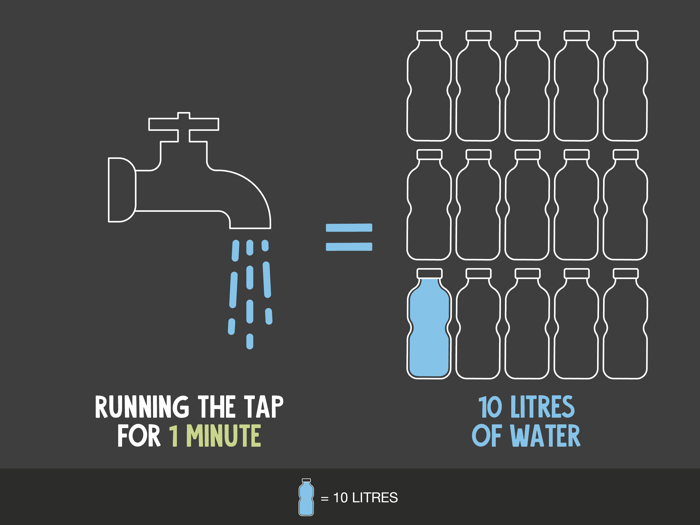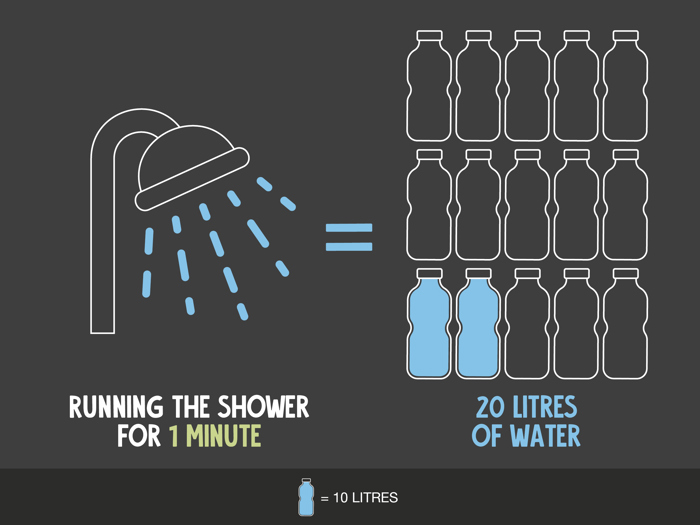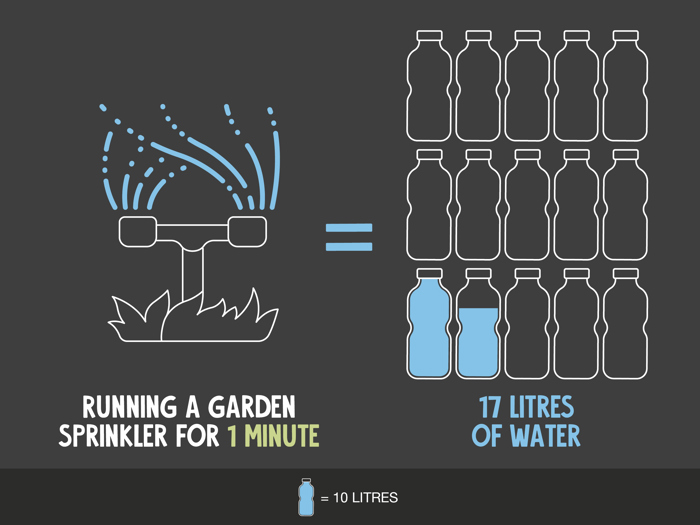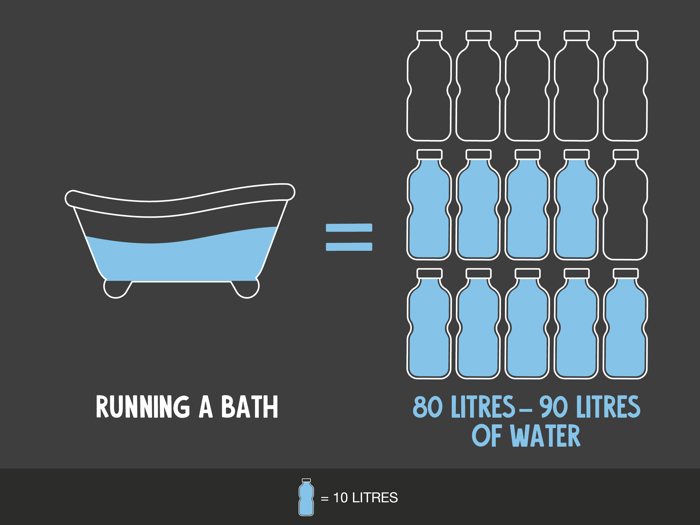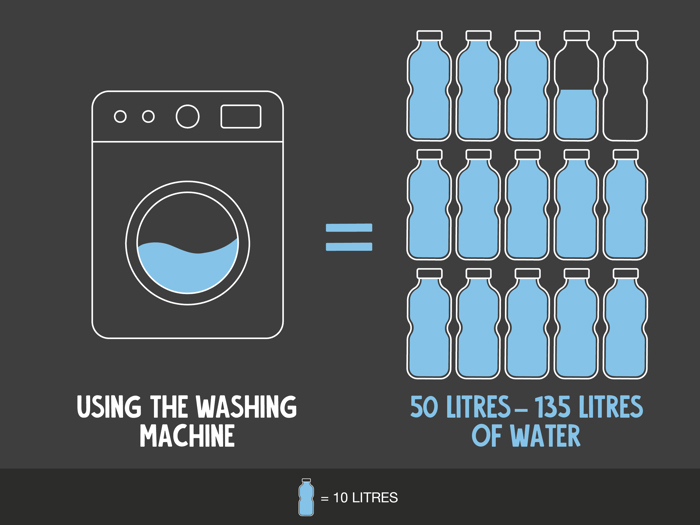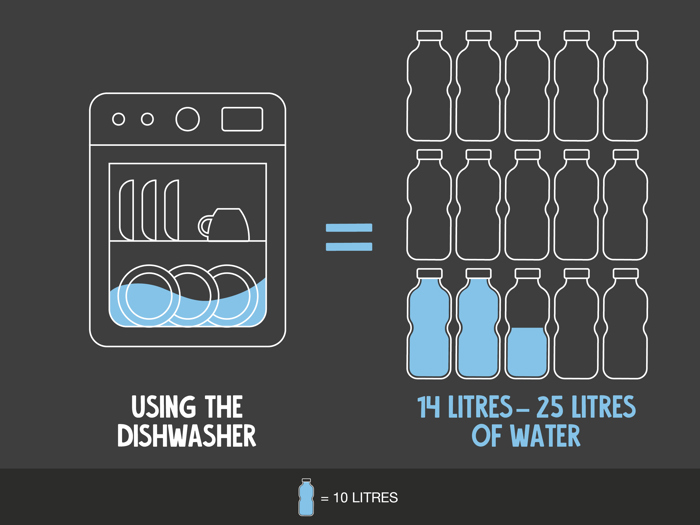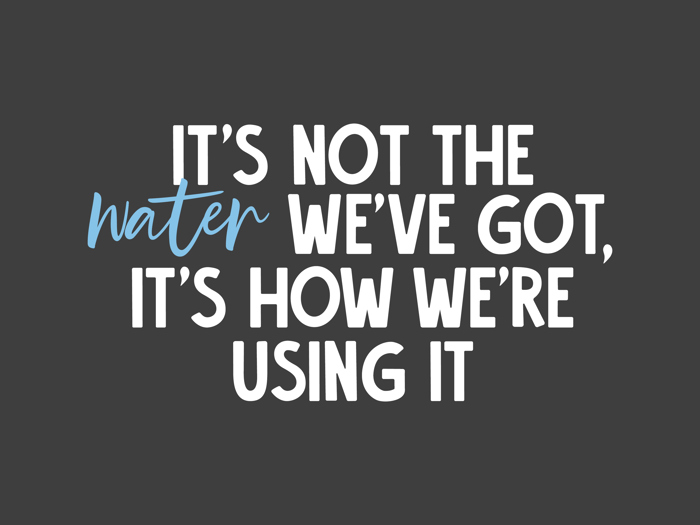- Services
- Airports
- Alcohol Licensing
- Animal Control
- Building Services
- CCTV - Public Use
- Cemeteries
- Environment and Sustainability
- Environmental Health
- Permits
- Rates & Property
- Resource Consents
- Rubbish & Recycling
- Services A - Z
- Summer Services
- Transport and Parking
- Water Services
Water is a limited and precious resource, but we’re some of the biggest water consumers in Aotearoa New Zealand. On average, each person in the Queenstown Lakes District uses over 500 litres of water every single day, which is more than double the national average.
Summer down here is a thirsty season when it comes to our water network, especially as we try to maintain lush green lawns and gardens at home, or seek out water-based fun in the hot sun.
Our water infrastructure is sufficient to meet the needs of our communities, but demand for water increases significantly in summer, putting our network under strain and elevating the potential need for temporary water restrictions. It also comes with the potential risk that if we're using water faster than our reservoirs can fill, we may not have enough to respond to an emergency like a wildfire.
To address this, we have two options.
We could increase the capacity of our network to meet the extra demand in summer, which would require plenty of new infrastructure to be built, including pipes taking water from our lakes and waterways, new treatment facilities, reservoirs, and even more pipes to get that water to households around the district. This is an expensive and unsustainable way to address an extreme jump in water demand for three months of the year.
Instead, there are many simple things we do to change how we’re using water at home.
Please consider the actions below that we can all take to ensure we have the same access to water in the future as we do today.
Water statistics in the home
Water saving tips at home
-
Lawns are usually the single largest user of water in the home, but there are quick and easy steps you can take to help protect this limited and precious recourse.
Lawn establishment:
- When establishing your lawn, keep this to spring and autumn – this is when nature does all the hard work for us and provides plenty of water through rainfall, without the need for sprinklers, irrigation systems, and use of our water network.
- Consider a variety of grass like Fescues if you’re about to establish a new lawn, as this is more drought resistant and better able to cope with the peak temperatures we experience in the district, while still offering a lovely surface to walk and play lawn games on.
Irrigation:
- The use of irrigation tends to be a more efficient use of water than a hand hose, but it’s important you give plants a chance to dry out between watering.
- Direct water to the root zone of the plant is best, and if you see water running across the surface of your lawn or garden, that’s a sign you’re applying too much water.
- Don’t forget that it’s best to water your lawn or garden in the early hours of the morning or late at night to help reduce water loss from evaporation. If you’ve got an automated watering system, set it to irrigate between 10.00pm and 6.00am.
Don’t run your sprinkler at midday when it’s baking hot – a lot of that water will evaporate and never even reach the roots.
Lawn maintenance:
- Mow your lawn a little higher in summer to reduce how much water it will need and help it to withstand higher temperatures too.
- Mow more frequently and without a catcher, so grass clippings can break down and recycle nutrients into your lawn’s soil profile.
- Don’t forget to mow in the evening or at a time when it’s a bit cooler, to help reduce heat stress for your lawn.
-
There are plenty of quick and easy changes we can all make inside the home which may not seem like a big deal, but when added together can result in a significant change to how much we’re using water.
In the bathroom:
- Turn the tap off when brushing your teeth to save around 12 litres of water per day
- Use a plug in your basin when shaving rather than running the tap or shaving in the shower
- Cut your shower time! A minute in the shower can use up to 20 litres of water – so that ten minute shower in the morning and at night could be using up to 200 litres every single day
- Install a water efficient showerhead – using less hot water also means you’ll save on energy bills and reduce greenhouse gas emissions too!
In the kitchen:
- Chill water in the fridge for drinking instead of running the tap until it cools on a hot summer’s day.
- Skip the pre-rinse if you have a modern dishwasher, just a scrape of your plates and cutlery before they go in the machine should do.
- Wash veges in a pot of water rather than running the tap – you can then use that water for pot plants or the garden.
-
A dripping tap can waste over 1,000 litres (one cubic metre) of water each day (compared with your average 5kg washing machine using about 120 litres for a single wash).
- If you suspect a leak on your property, call a plumber to fix it as soon as possible.
It's also important we (as in, us at QLDC) do our part too and fix water leaks on public land.
- If you spot a leak out on the street or footpath, or anywhere else you think is Council land, call us and report it immediately by phoning 03 441 0499.
Taking action to fix water leaks quickly is important – not only is all that water going to waste, if a leak is left unattended for long enough, it could create subsidence (sinking of the ground) and impact not just your property, but neighbouring properties too.
Water leaks can also impact pressure in the home which you’ll notice in places like the shower and how your washing machine is performing.
Get alerts about water restrictions
Sign up for free Community Text Alerts from Council to stay in the loop about any changes to water restrictions in the Queenstown Lakes District.
Our water statistics
Our water network is made up of 12 treatment plants, 34 pump stations, and over 680km of pipes that deliver drinking water to the taps of over 17,000 properties.
On average, we use an eyewatering 501 litres of water per person every single day. That's more than double the national average!
In 2023, the month with the most water used in the Queenstown Lakes District was February, resulting in an average of 689 litres per person each day that month.
One of the main sources of Council’s greenhouse gas emissions is from the construction of water supply infrastructure, and the energy required to filter, heat, and pump water to households.







